My friend Sneža and I arrived at Bode Beach (Praia do Bode) with intention to spend a lazy day there. There was enough beauty around us that we did not have to worry about being bored. In addition, when we arrived, there was even wonderful shade under the trees that grow at an elevation above the beach, but during the day this disappeared. To start with, we entered the water in order to be bashed a little by the waves. We comforted ourselves saying this was good as natural massage.
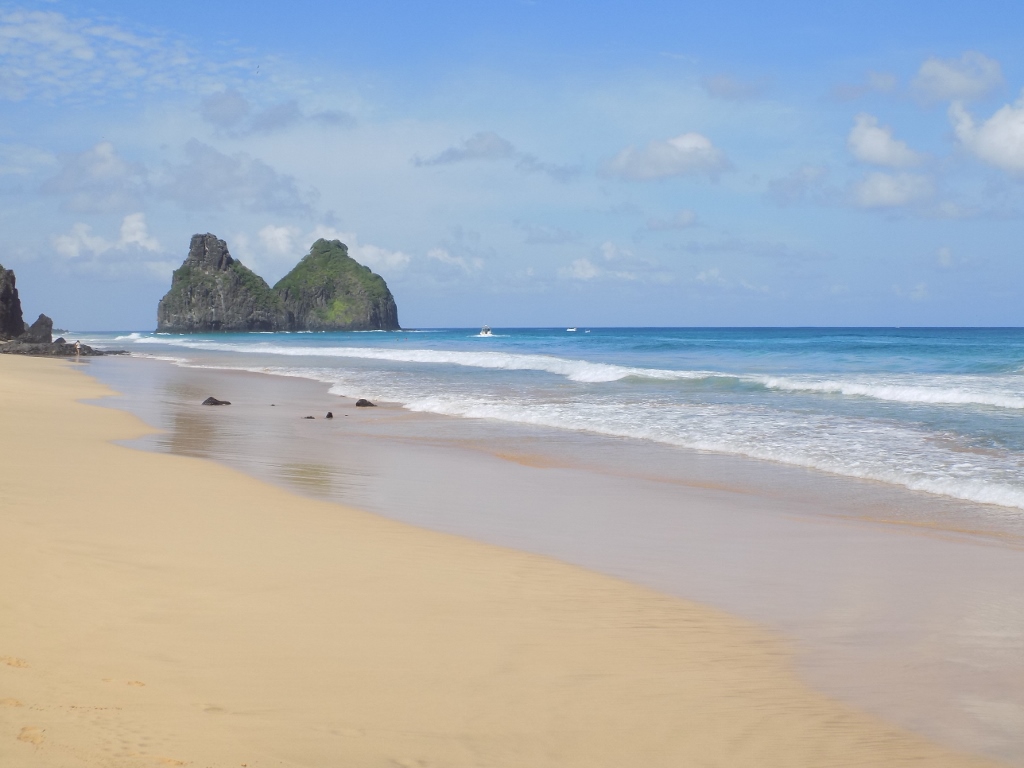 Bode Beach
Bode Beach
I have already said in the previous text that Bode Beach is a part of a whole line of beaches and thus I walked in the direction of Cacimba do Padre Beach (Praia da Cacimba do Padre) which can be easily visited during the low tide, but I still returned to our part of the beach rather soon.
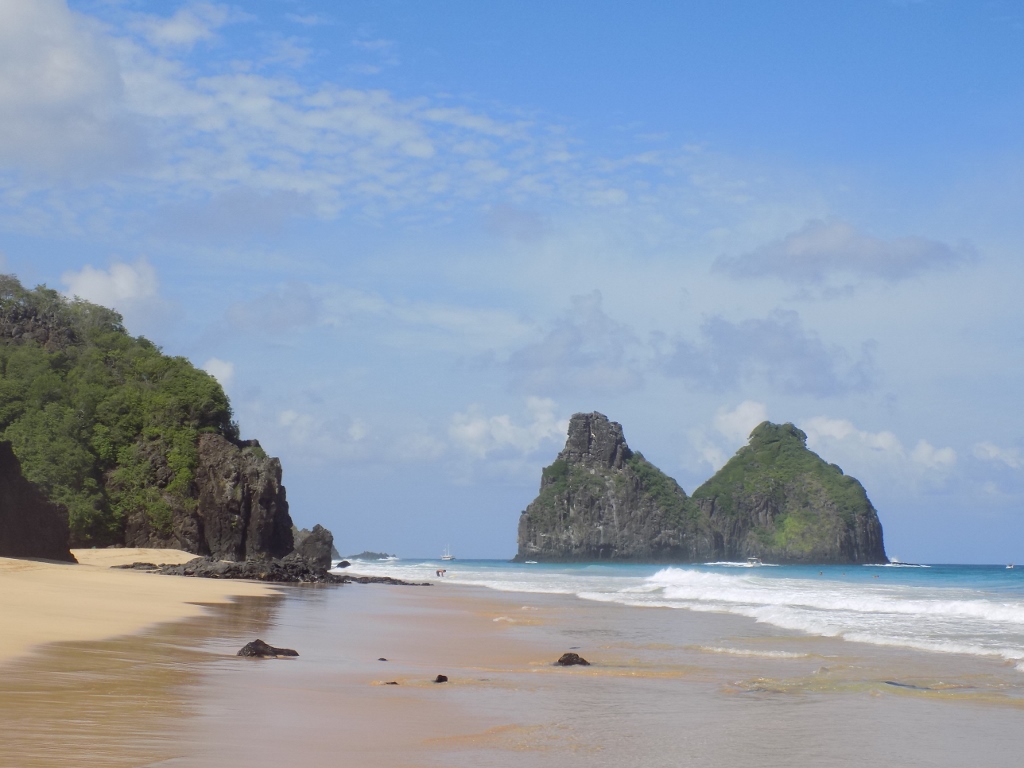 Bode Beach and the Islands of Two Brothers; Cacimba do Padre Beach cannot be discerned because of the rocks on the left-hand side
Bode Beach and the Islands of Two Brothers; Cacimba do Padre Beach cannot be discerned because of the rocks on the left-hand side
When we just got to the beach that day, the water came to at least a couple of dozen metres from the place where we left our things in the shade. But, as the time was passing, we could see the ocean waters withdraw. It was the time of the low tide. Since the land slopes here extremely mildly, the low tide seemed more noticeable than it perhaps was. The level of the water maybe went down by a metre, but the waterline moved a hundred metres or so towards the ocean.

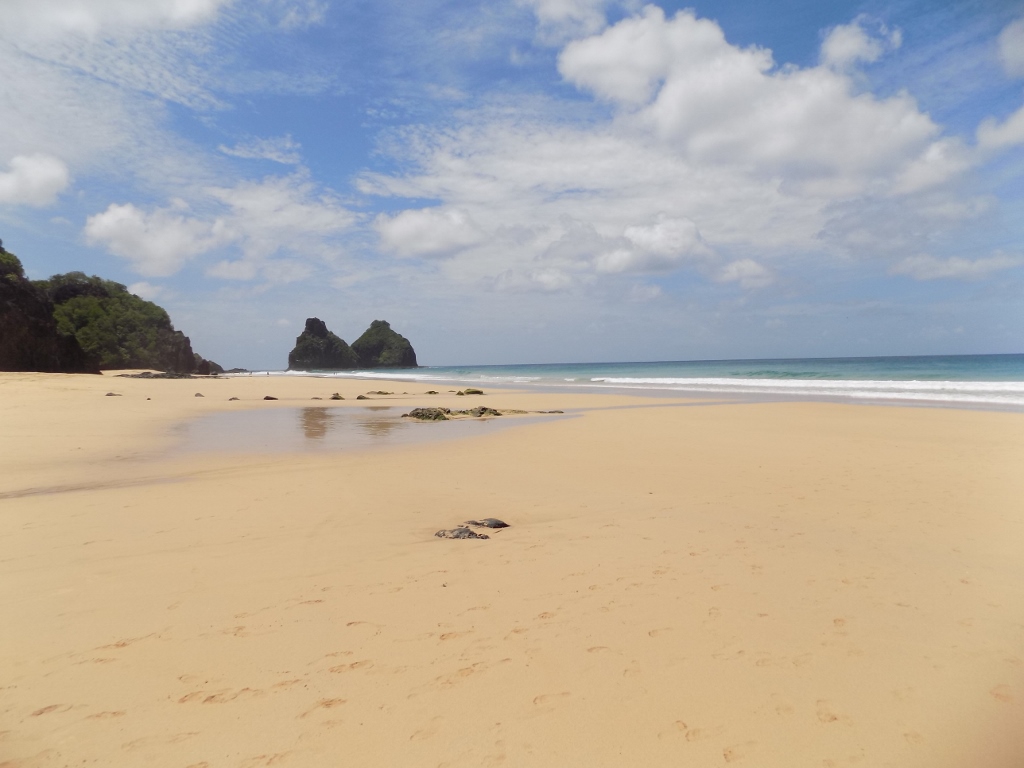 When we first entered the water, there was the ocean where I’m standing now
When we first entered the water, there was the ocean where I’m standing now
Just as it may be seen in the photos, the ocean was completely calm out towards the open seas, but the currents and the moving of the water under the surface were very intense. When the ocean’s waters come across the beginning of the land closer to the water surface, they first go up in the form of a wave and then they break. These waves were occasionally a couple of metres high. When you enter the water and move towards those waves, it is not good when the wave catches you at the point when it already starts to break, since the water is very powerful at that moment and can hit you hard and drag you towards the shore. Nothing too bad, since it was sufficiently shallow everywhere, usually not even up to the waist, but it did tumble us a little.
While I was sitting on the shore I watched some local people enter the water and observed what they were doing, so later I tried it myself and it worked well. When a wave comes and it is close to the breaking point or has already started to break, one should not try to swim over it, since its crest may easily prevent you, lift you up and practically return you towards the shore. What these local people were doing (and this definitely functions) was that they dived under the wave. This requires some practice, but can be mastered quickly and then the waves do not constitute such a large problem, although when they are so big, neither can you swim well nor can you just enjoy being in the water and you have to take care of the waves all the time, where they are, how big they are and when they start to break.
At some point Sneža and I decided to be very brave and thus we dived under the waves and passed them one after the other in order to move behind the line at which the waves rise. Although it seemed to be rippling only slightly at the surface level, in this part the ocean was essentially calm and we could finally swim a little. As the water waved to and fro, I would occasionally feel the sand bottom with my toes. In other words, it was not very deep. At some point, both of us lay on our backs, as if we wanted to rest a little. I may have been in that position for around 20 seconds and when I resumed normal position I realised the water current had dragged us parallel to the beach in the direction of the Islands of Two Brothers over 100 metres for sure. In the meantime, Sneža also straightened up and we both became conscious that the current was actually incredibly strong.
We immediately said we should swim directly towards the shore and not try to go back to the place from which the current had dragged us so powerfully. I don’t know if it was because of the mild panic, the feeling of discomfort or some sudden exhaustion, but I did have an impression that this swimming towards the shore went very slowly. I looked back to Sneža and I could see that she was on her back, leisurely throwing her arms over her head, so I shouted to her not to do the Esther Williams routine, but to get serious and to swim towards the shore. She shouted back that she simply does everything with style. I knew, of course, that this was a joke, but although an excellent swimmer, she, too, was exhausted and it seemed to her that she moved this way as well, but she was getting less tired. Finally we did reach the shore and then we walked along the beach to the place where our things were.
Later during the day I dared cross behind the wave line only once more, but I stayed there just briefly.
Since we were stationed on one end of the beach, there were rocks that separated our beach from Americano Beach (Praia do Americano) there. Within these rocks there were small natural and shallow pools and at one point I decided to go there and get a little wet.
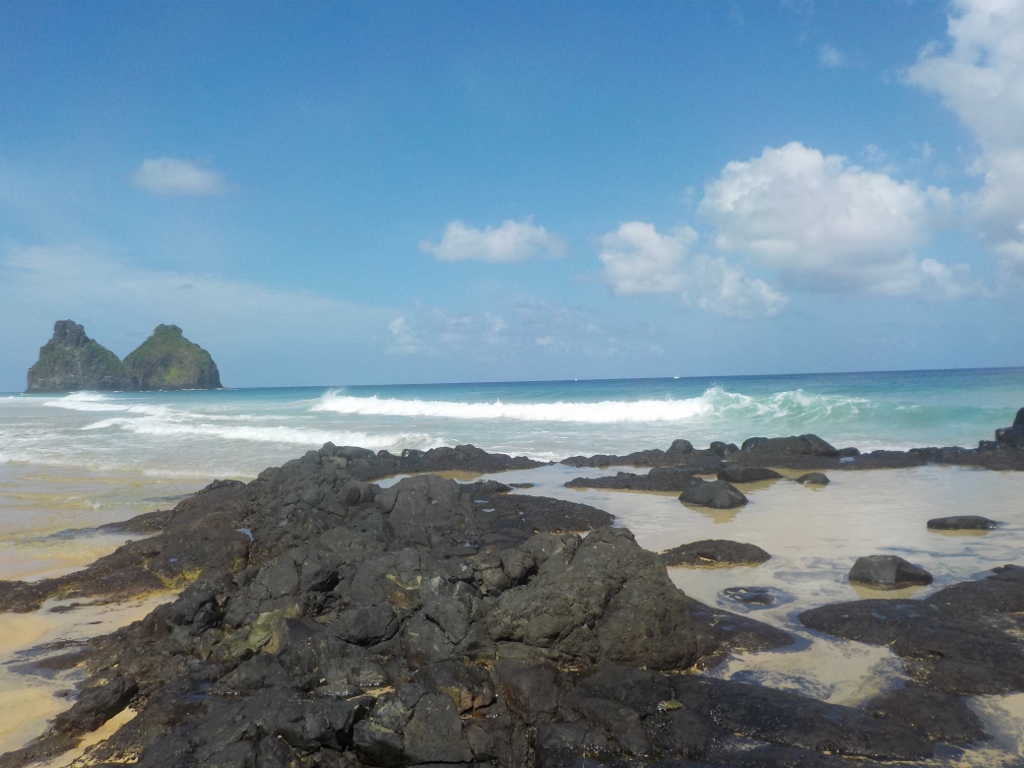 Bode Beach and the shallow “pools” on the right-hand side
Bode Beach and the shallow “pools” on the right-hand side
While I sat there in the water, I took photos of my surroundings, myself, as well as the little fish which the ocean leaves behind when the low tide pulls them back.
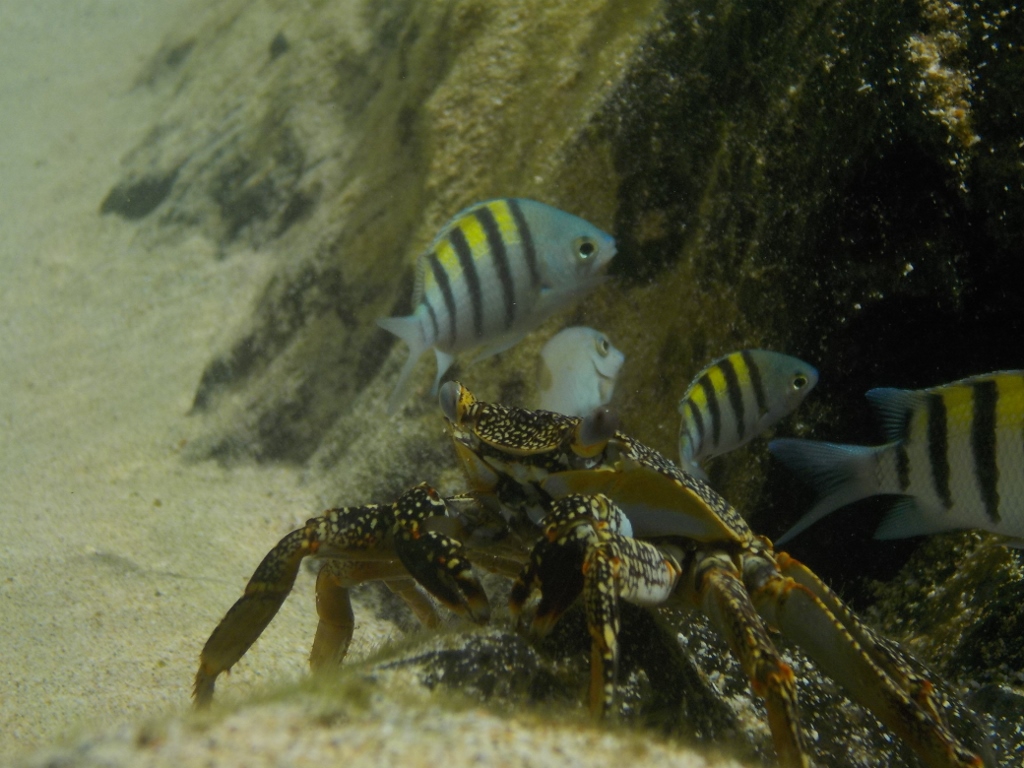 Residents of the “pool” on Bode Beach
Residents of the “pool” on Bode Beach
As I’m mentioning animals, near this beach, and I’m sure this also exists near other beaches, we came across a sign with a notice that said in the period from December to June no visits to the beach were allowed after 6 pm. The reason for this is that green sea turtles lay their eggs in this period and then Chelonia mydas has priority in comparison to Homo sapiens.
At some point, these two Homo sapiens specimens I’m writing about here became thirsty and hungry. And this happened on the beach with no buildings, facilities, running water or electricity. Still, this poses no obstacle for entrepreneurial local residents. One nice young man had already placed a parasol on the very edge of the beach and underneath he had a mobile fridge made of styrofoam in which he kept already prepared sandwiches and drinks, and there was also ice, so he could make a caipirinha on the spot, plus he had already arranged some deck chairs under a couple of parasols. The only problem for the two of us, who had moved to the chairs once there was no more shade where we had been until that time, was when we had to walk over the scorching sand in order to get to the young man with food and drinks.
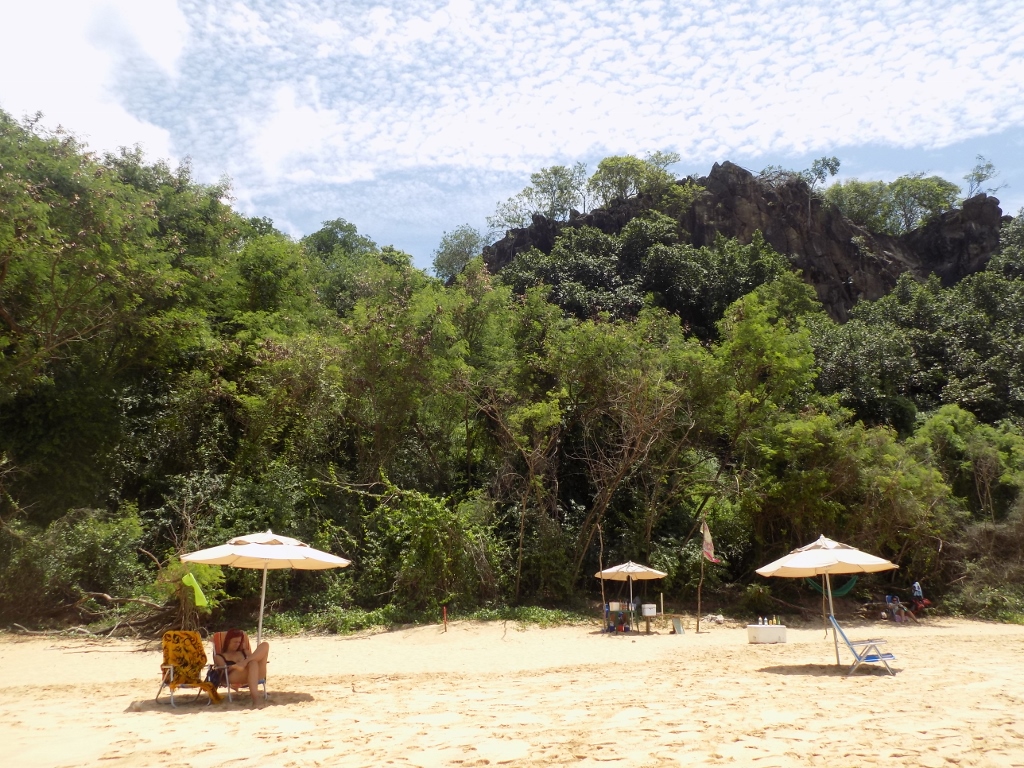 Sneža is in the shade to the left, the “shop” is near the forest in the middle, while an unoccupied parasol is to the right
Sneža is in the shade to the left, the “shop” is near the forest in the middle, while an unoccupied parasol is to the right
Even in the shade under the parasol it was possible to feel the incessant heat and we periodically went to the water just to soak ourselves and cool down the body and the head. And thus we spent a couple of hours more here in order not to move away from the beach when it was at its hottest. On the other hand, the beach was very beautiful indeed and we were fully content with our choice for the day.
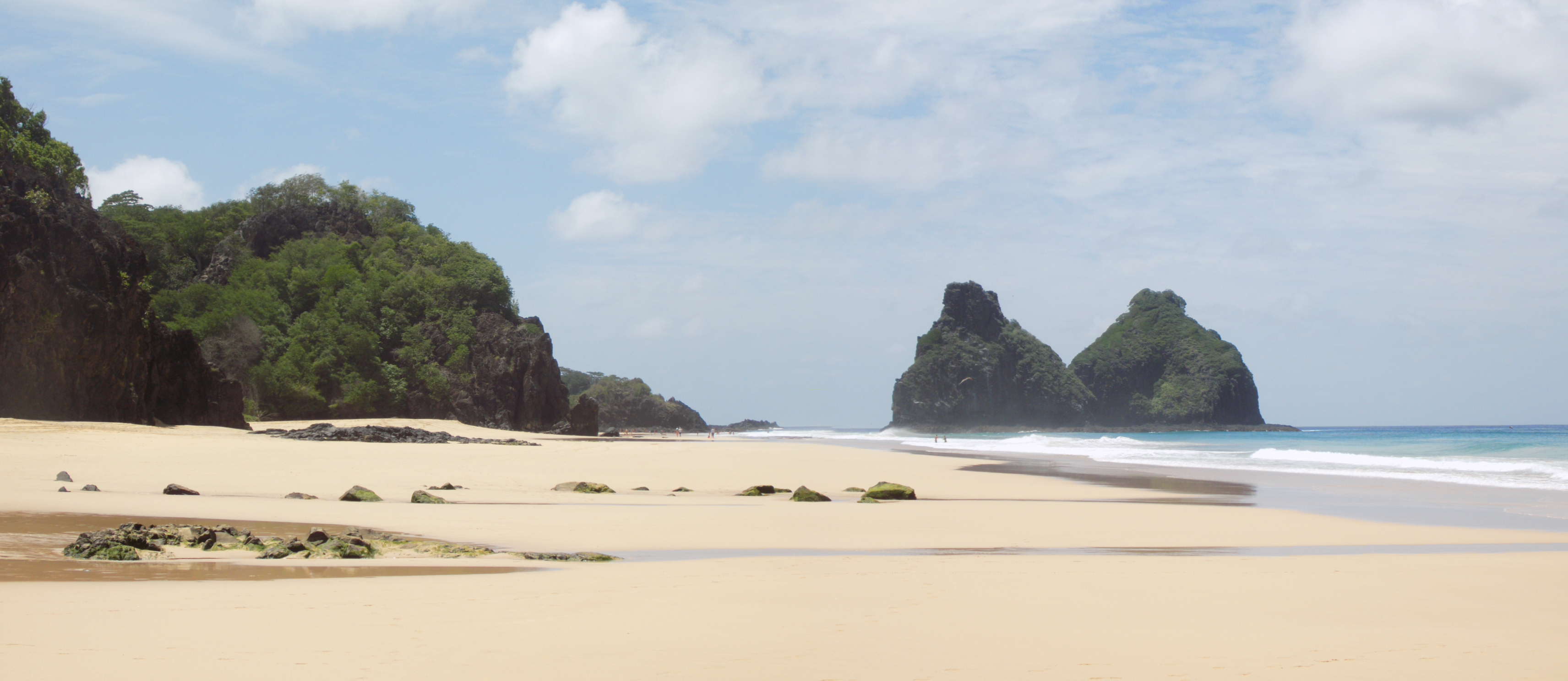
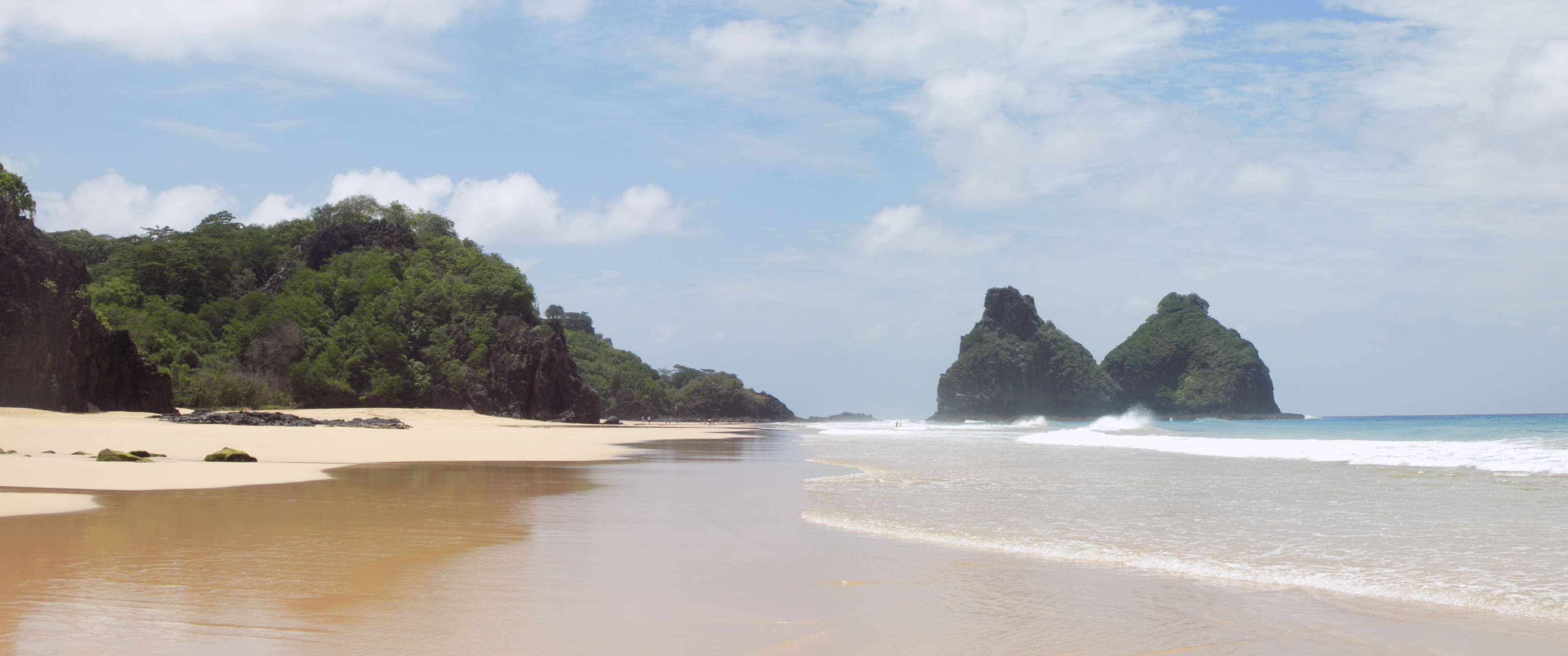
Later in the afternoon we decided to go to the biggest settlement on the island and that is Vila dos Remedios where, among other things, we wanted to see the local church. I don’t know if the village was named after the church or vice versa, the point is that this was the Church of Our Lady of Remedies (Igreja Nossa Senhora dos Remédios) since “remedios” means remedies. This was just in order to see on the island something that was not made by the nature, but by the man.
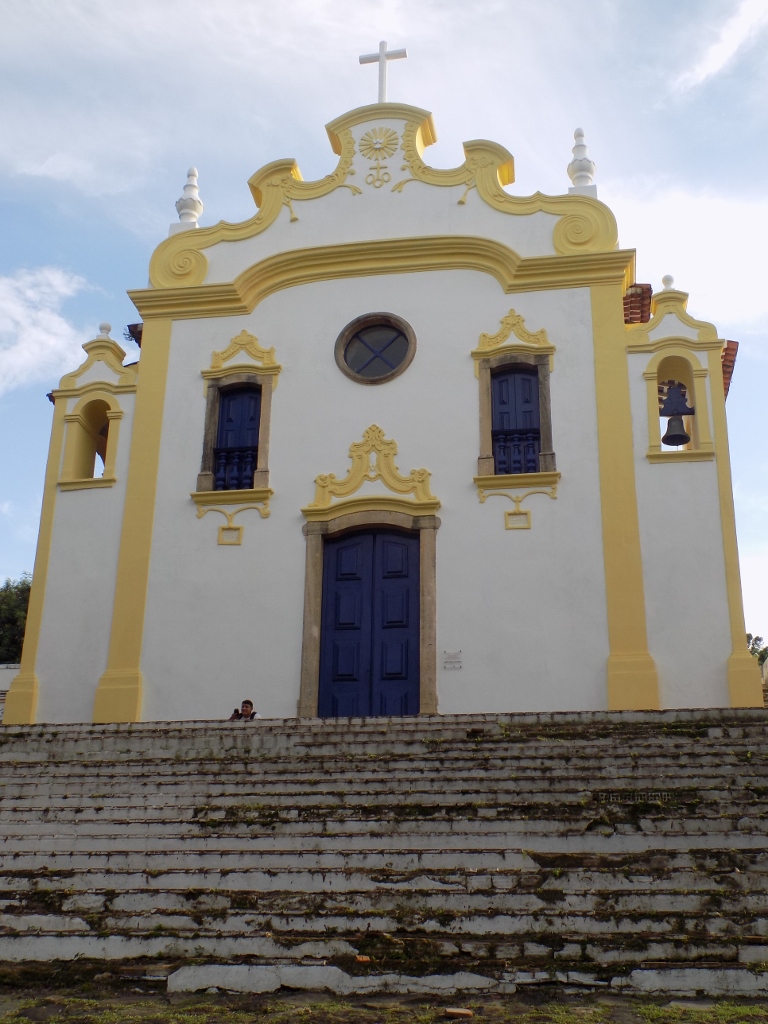 Church of Our Lady of Remedies
Church of Our Lady of Remedies
We also went down to Biboca Beach (Praia da Biboca), but we were far from impressed, so we walked a little more there and then we returned in the direction of our B&B going to the same restaurant for dinner as the previous night. They were great again.
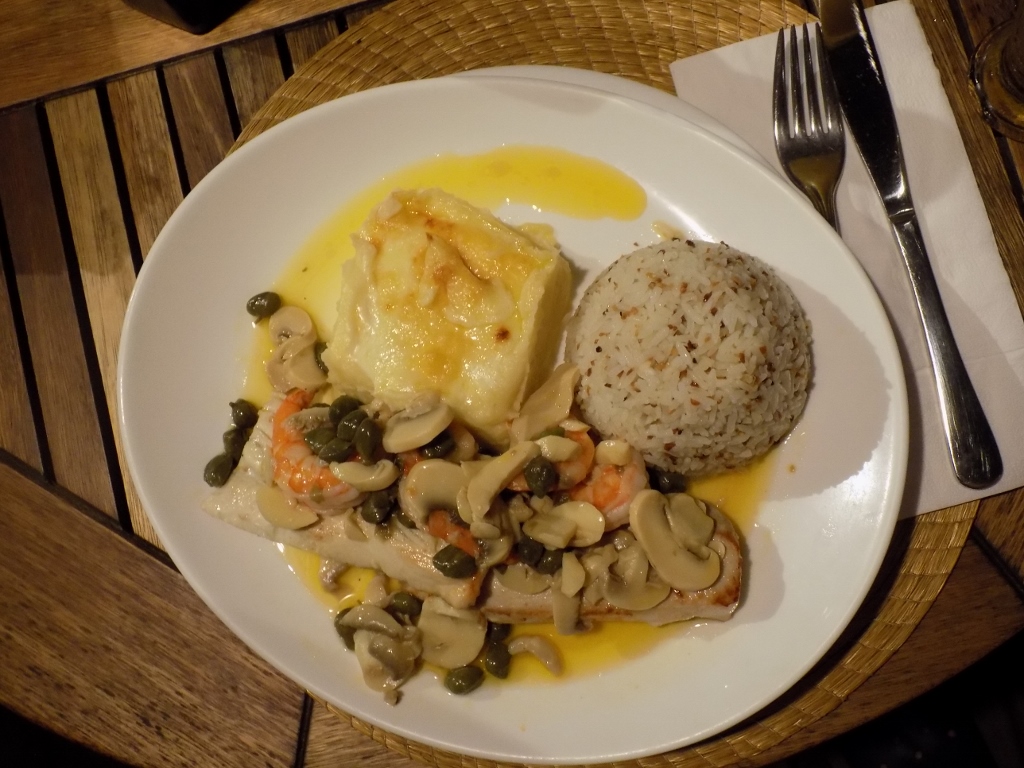 Dinner at the restaurant
Dinner at the restaurant
The following day I could hardly convince Sneža to go again to Sueste Bay (Baia de Sueste); she almost did not believe when I said there were indeed parts of the beach where the water was transparent and apparently turquoise, rather than murky and brownish.
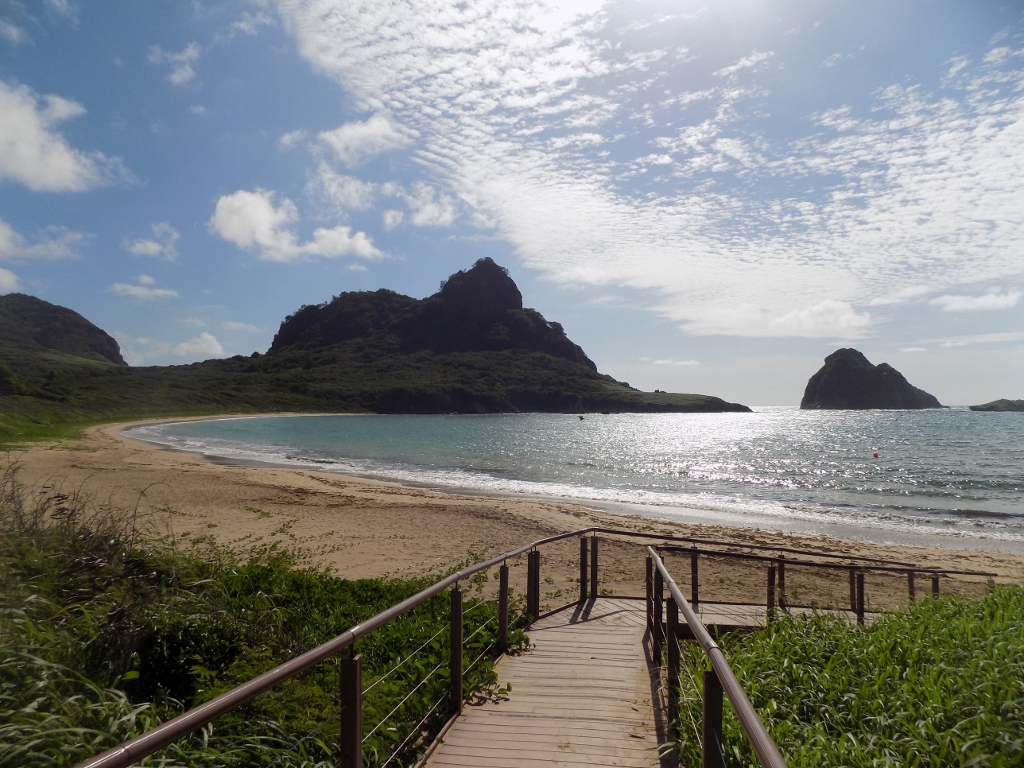 Sueste Bay
Sueste Bay
When we got there, there was nobody on the beach and the two of us went a little farther where the water was really nice. We swam for a while and then went out in order to dry. As it may be seen on the photo, there is no shade near the water, so soon it became just too hot and I was standing in the ankle-deep water in order to dry faster. All of a sudden I noticed something unusual that was moving in the shallows not too far from me. I looked better, once, twice, and then I definitely realised that what was swimming there, close to me, were – baby sharks.
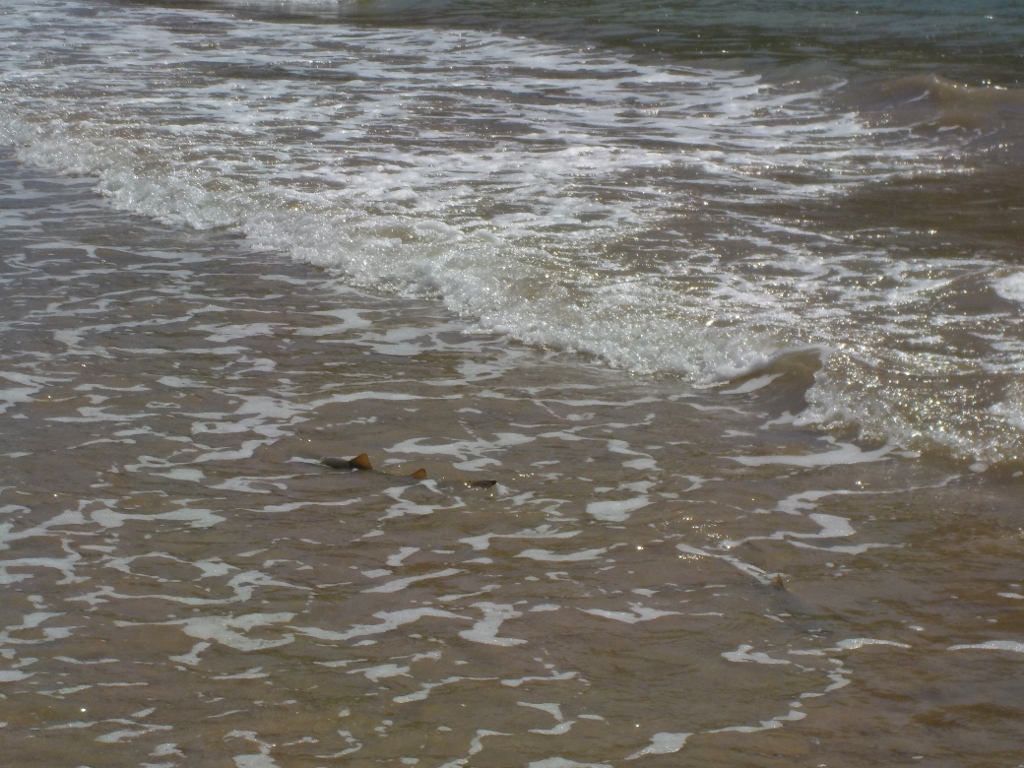 There are all sorts of things in the waters of Sueste Bay
There are all sorts of things in the waters of Sueste Bay
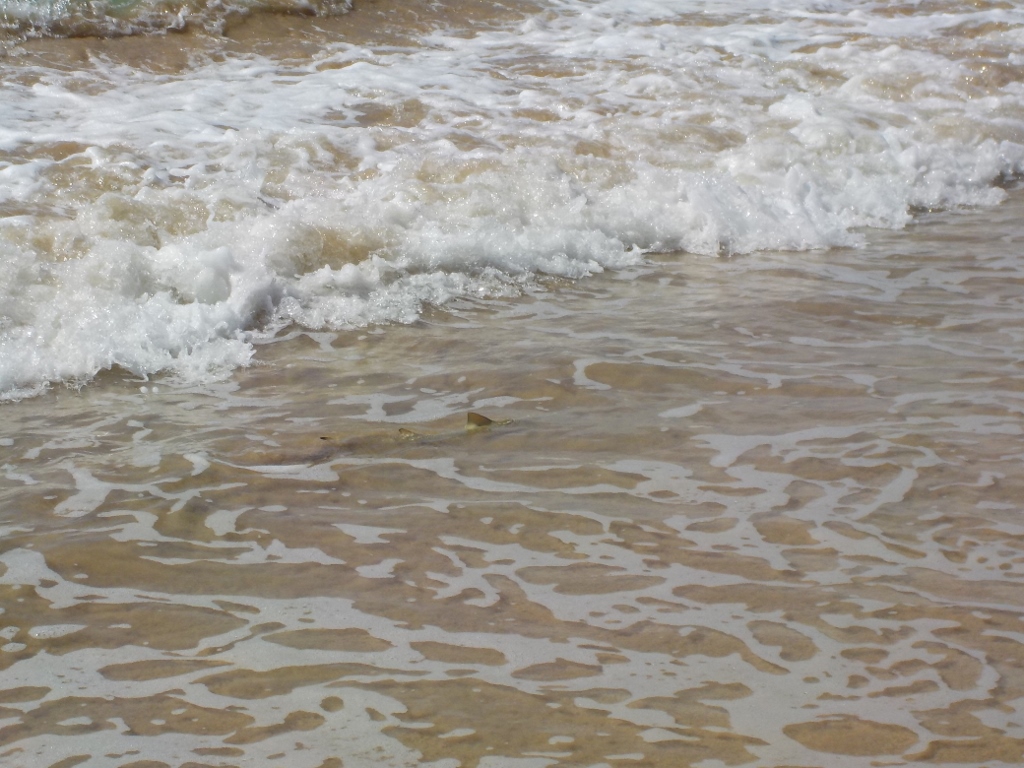 There are all sorts of things in the waters of Sueste Bay
There are all sorts of things in the waters of Sueste Bay
I did not understand at all what they were doing there in these shallows, but there were several of them and they swam parallel to the shore, so I guessed this was probably some habit of theirs. Looking at them and trying to take photos of them before the waves covered them and I lost them from my sight, I could not help but think that they must have been somewhere there also while Sneža and I swam in the ocean’s bay without a single care in the world.
If this had been some of the more sentimental species, there would have been place for serious concern, since where there are babies, there is a mom. This way, mother shark comes to this tucked bay, delivers what she has to deliver and then leaves its young to the Mother Nature to care for the offspring, while Mother Shark goes back to the ocean to have fun without any second thought about her babies.
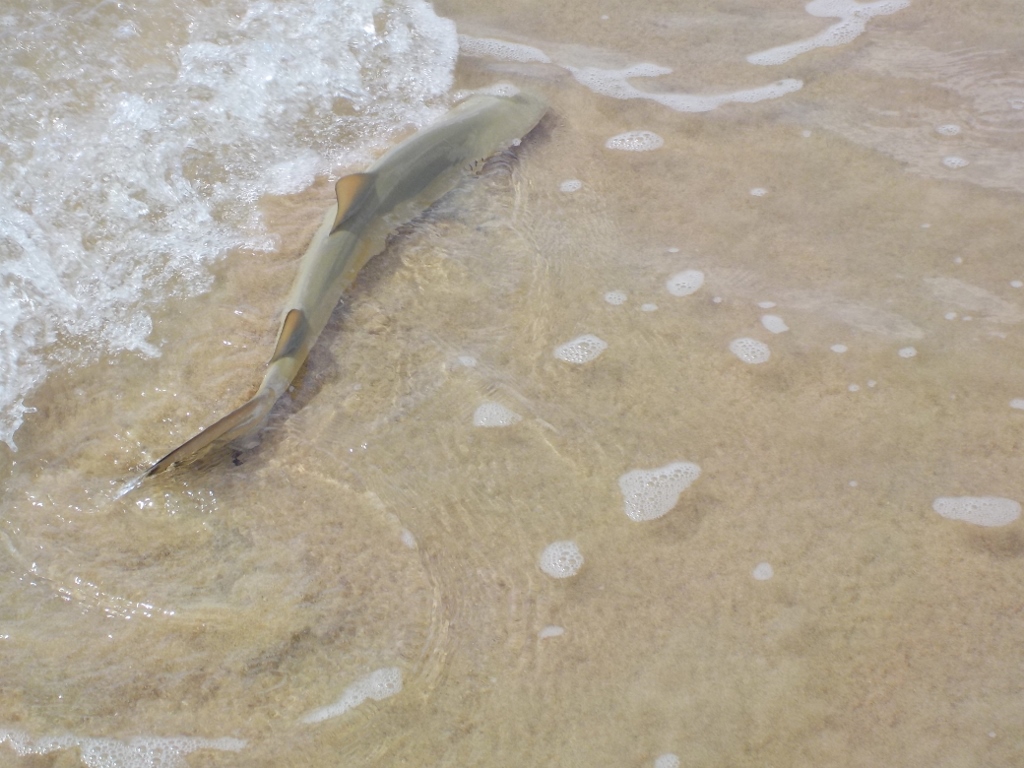 Baby shark in the total shallows
Baby shark in the total shallows
After this watching of the sharks, we moved away from the beach and got to a shaded terrace that is a part of a café/visitors’ centre located on one end of the beach. From there, it was possible to see now, in the noon’s sunlight, that there were nice sections of the beach to swim in.
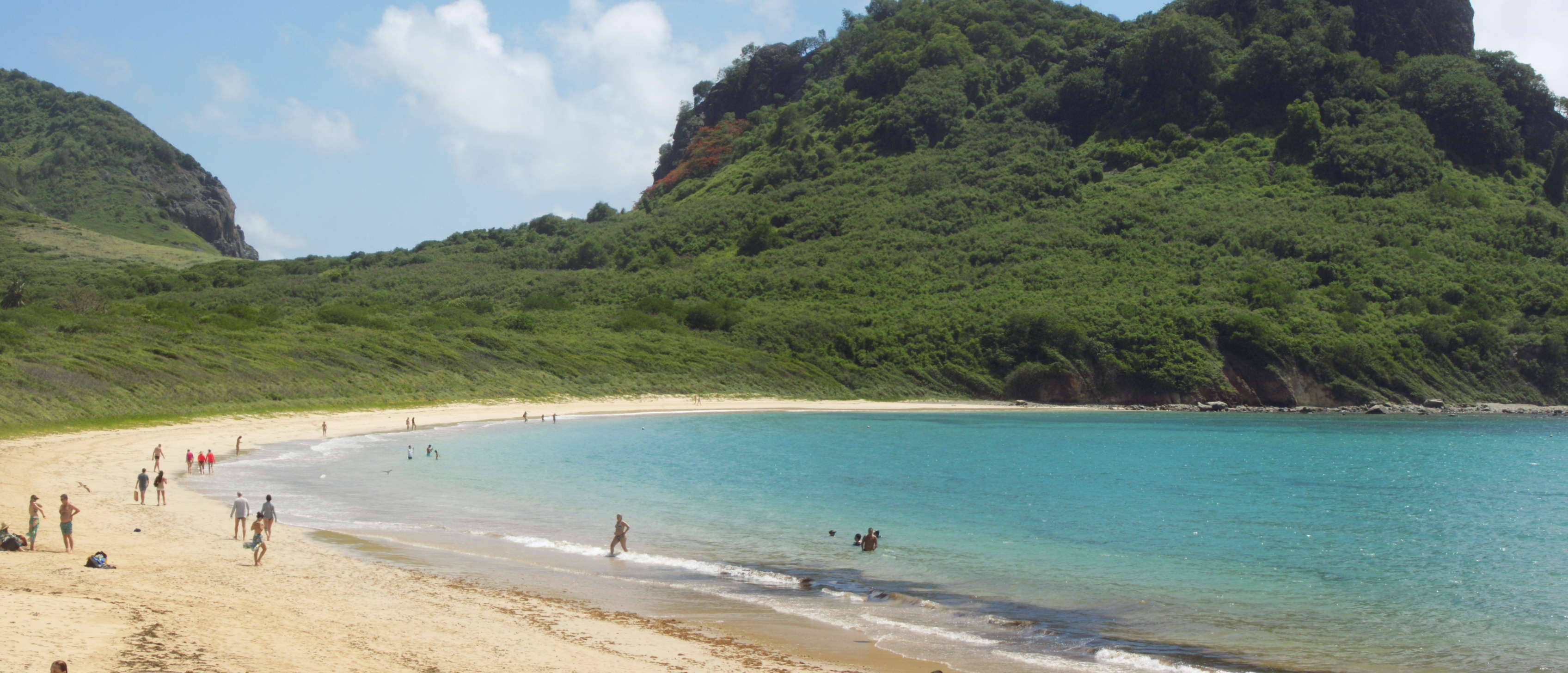

From that terrace, while we were enjoying coffee, I watched and took photos of brown boobies (Sula leucogaster) that I found to be completely impressive. They were hunting or practicing hunting in the bay, as if humans were not in the water or close to it.
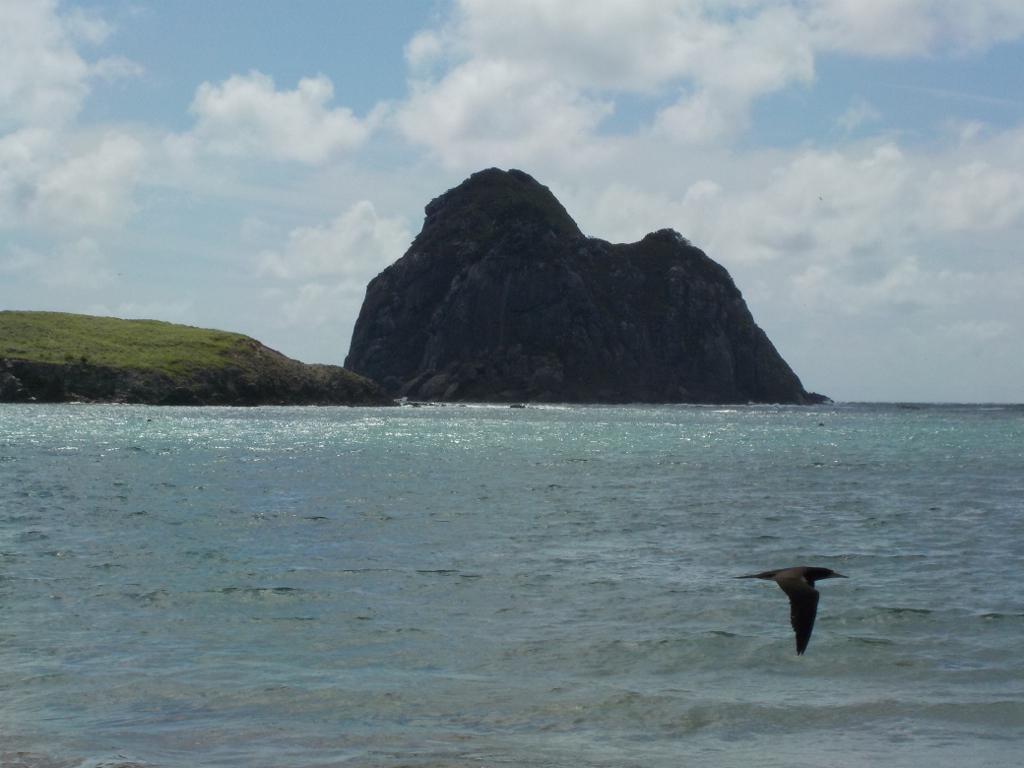 Brown booby in Sueste Bay
Brown booby in Sueste Bay
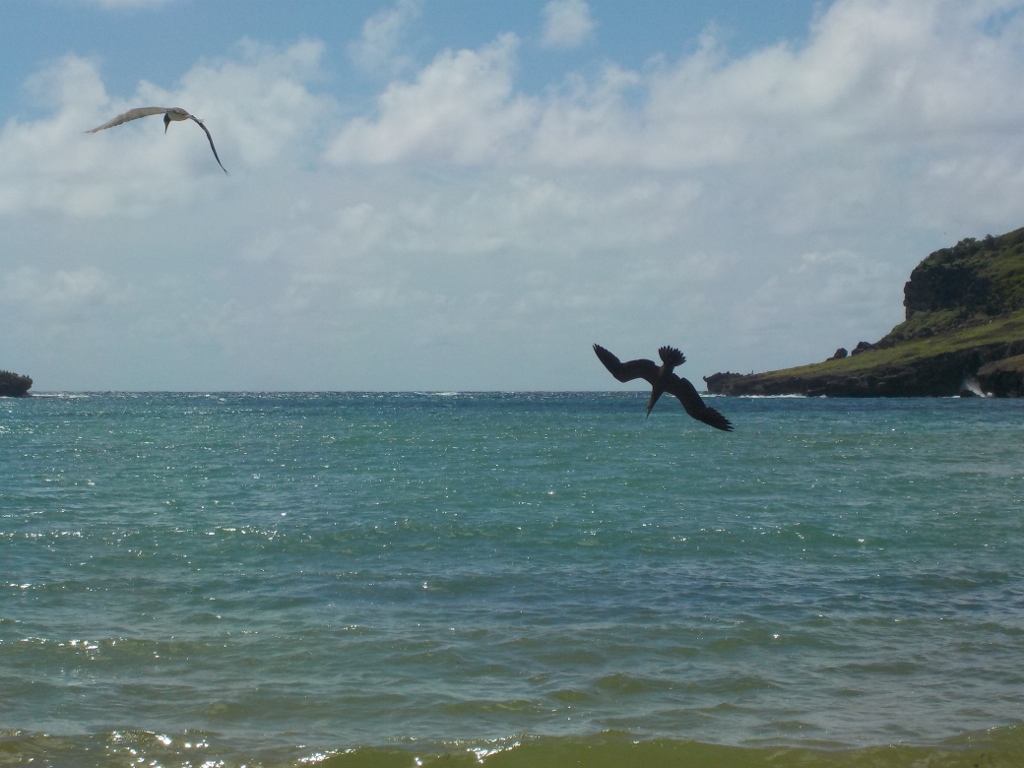 One brown booby is observing the situation, while the other one is nose-diving
One brown booby is observing the situation, while the other one is nose-diving
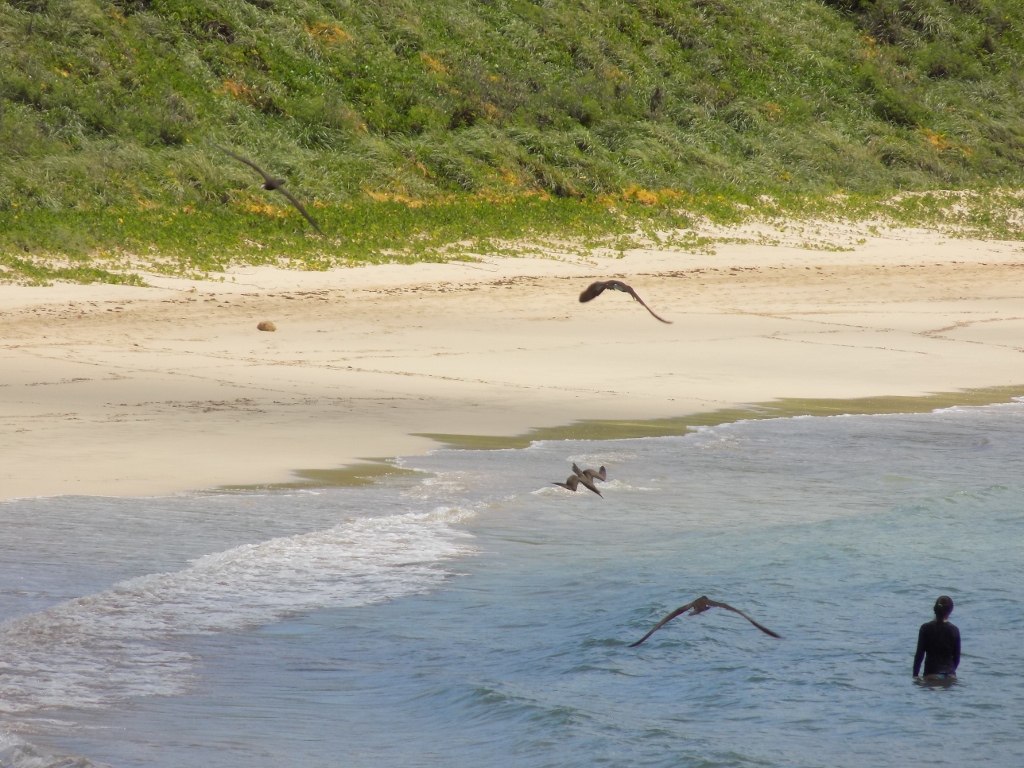 Brown boobies in Sueste Bay
Brown boobies in Sueste Bay
There were also frigatebirds.
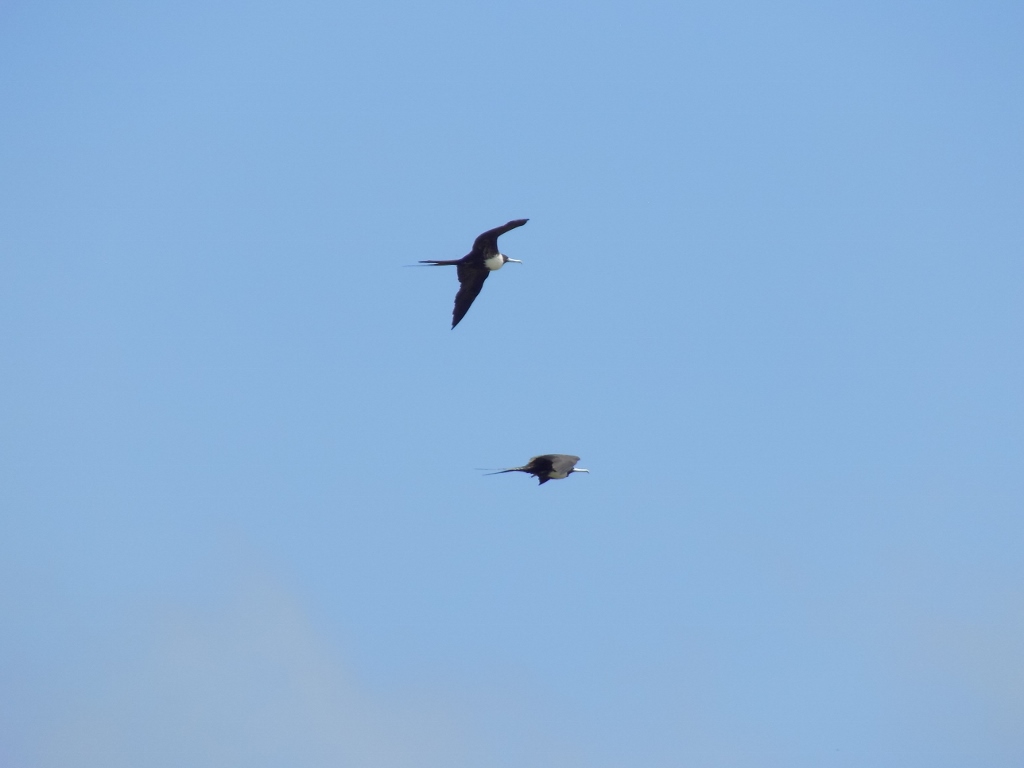 Frigatebirds are flying above Sueste Bay
Frigatebirds are flying above Sueste Bay
Since I’m already mentioning frigatebirds, let me say that later we moved to Boldró Beach (Praia do Boldró) which we had already visited on the first day. We liked it and were not ready to experiment and go to some other, unfamiliar beach and not know what to expect there. When the Sun was getting close to its setting, some guys got small fish from somewhere and then started to throw them up in the air in order for a couple of frigatebirds to catch them while flying. I could not catch that moment, but the beach, the birds, the ocean and the sky were certainly stunning even without the photo of the exact moment of the hunt.
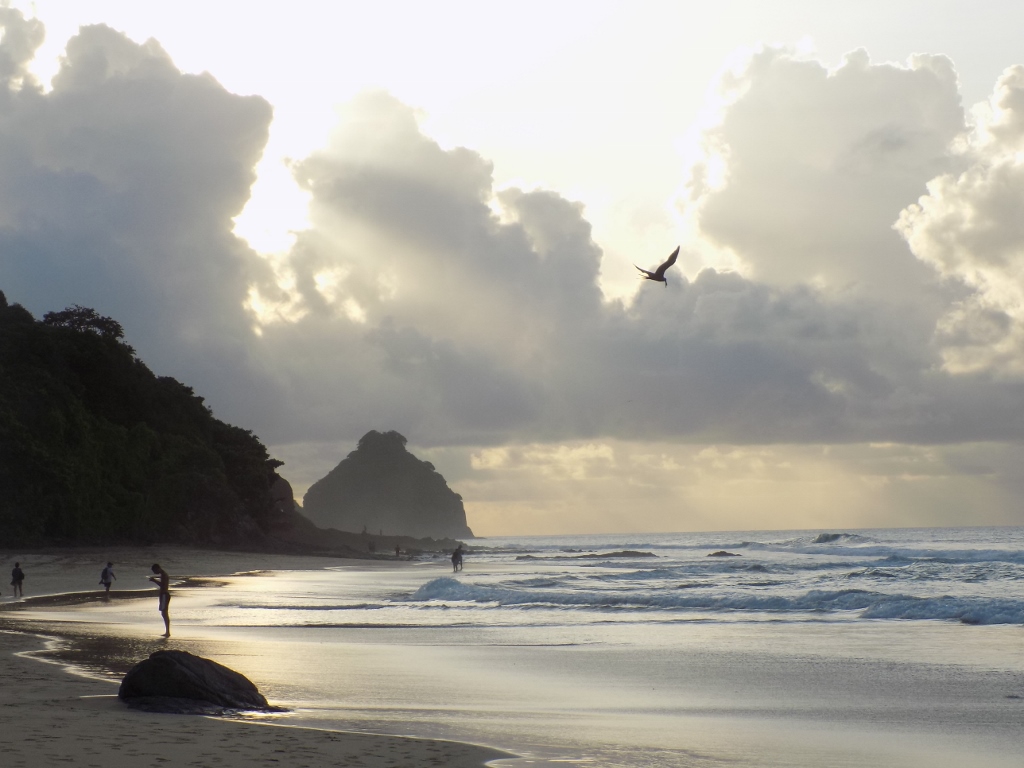 Boldró Beach
Boldró Beach
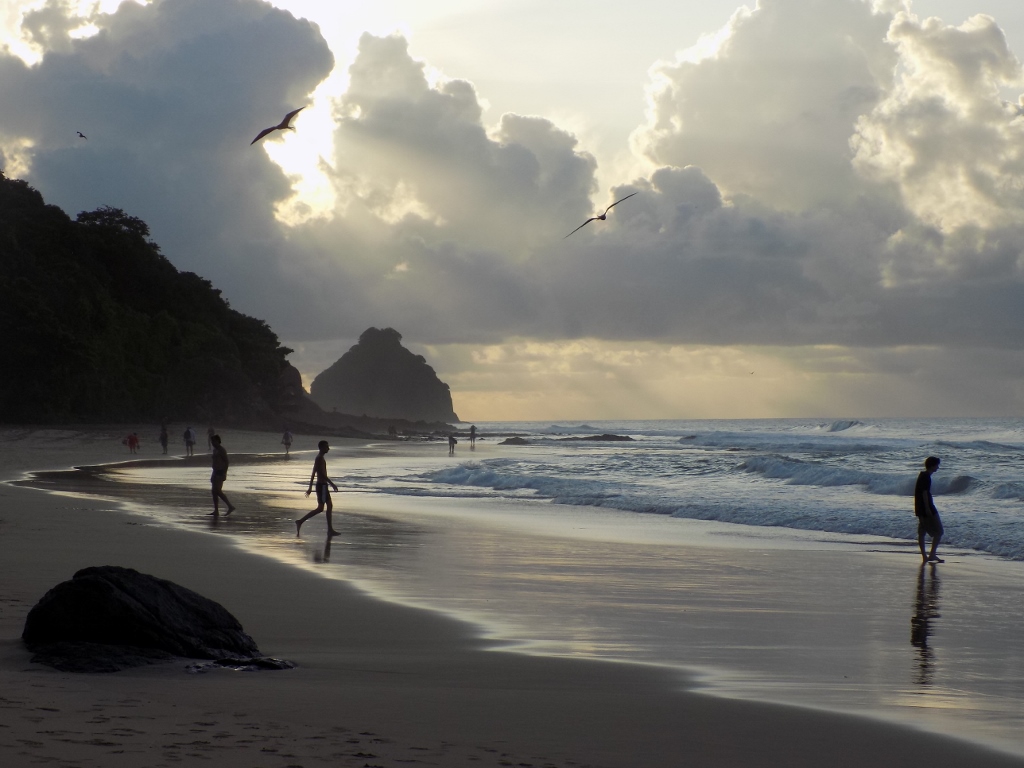 Boldró Beach
Boldró Beach
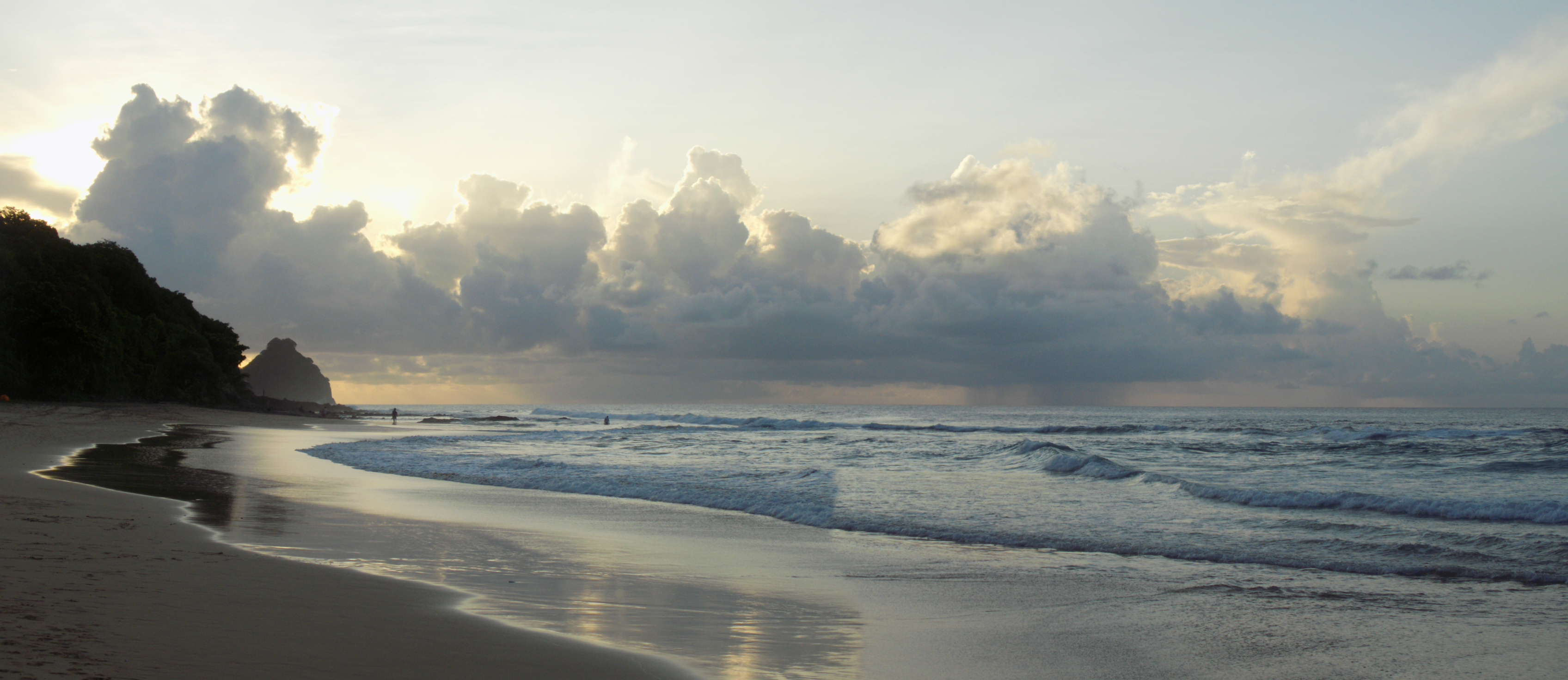
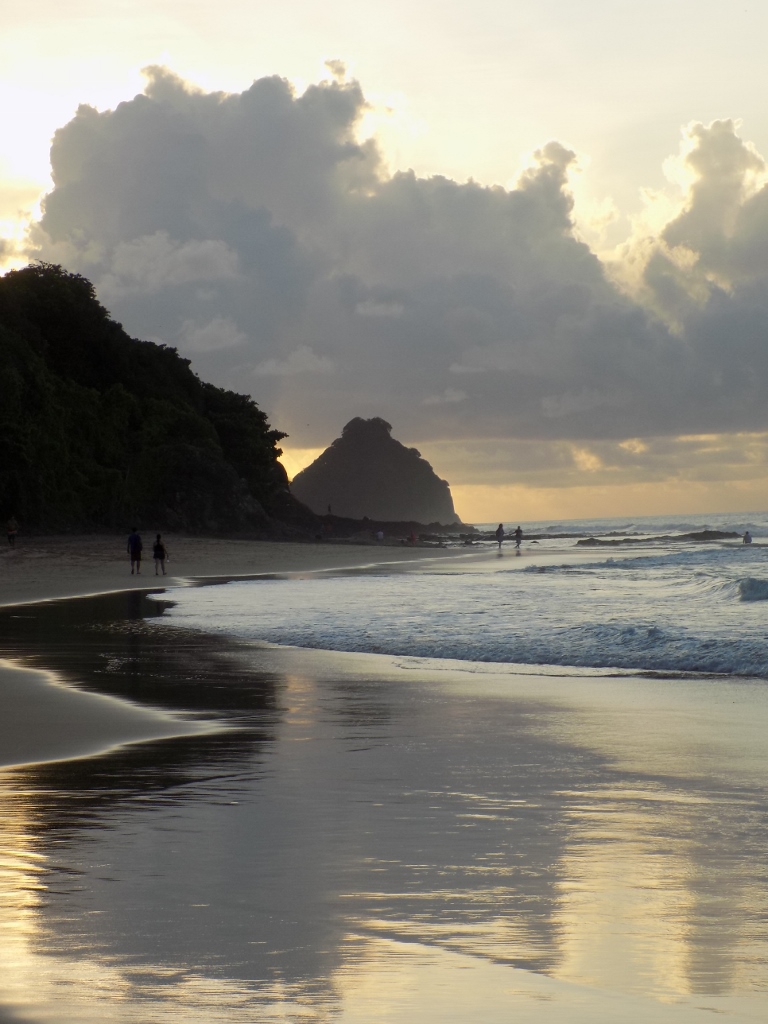 Boldró Beach
Boldró Beach
This was our last evening on the Fernando de Noronha archipelago and we enjoyed staying on the beach for as long as possible. Afterwards we had dinner at the same restaurant as the previous two nights and then we went back to the B&B to get ready for the return to the continent the following day.
The next day we flew to Recife first and then we caught another flight to the city of Fortaleza. Any other combination (a plane plus a coach plus connections) would be far too complicated, the coach drive would be over 12 hours and this would not be cheaper either. So, we finally reached our last destination on our journey around Brazil. Still, we opted for Fortaleza only as the place from which we had the return flight to Europe and there we spent less than 24 hours.
When planning our journey, I chose a hotel by the very beach, but the hotel proved to be a major disappointment and I don’t want to talk about it. The idea was to spend the last free hours of our stay by walking beside the beach, as well as to go for dinner upon our arrival and lunch before our final departure from Brazil. And we did all of this, while also buying some trinkets at a fair that was organised on a spacious plateau near the beach, so we basically successfully filled out our remaining time in Brazil.
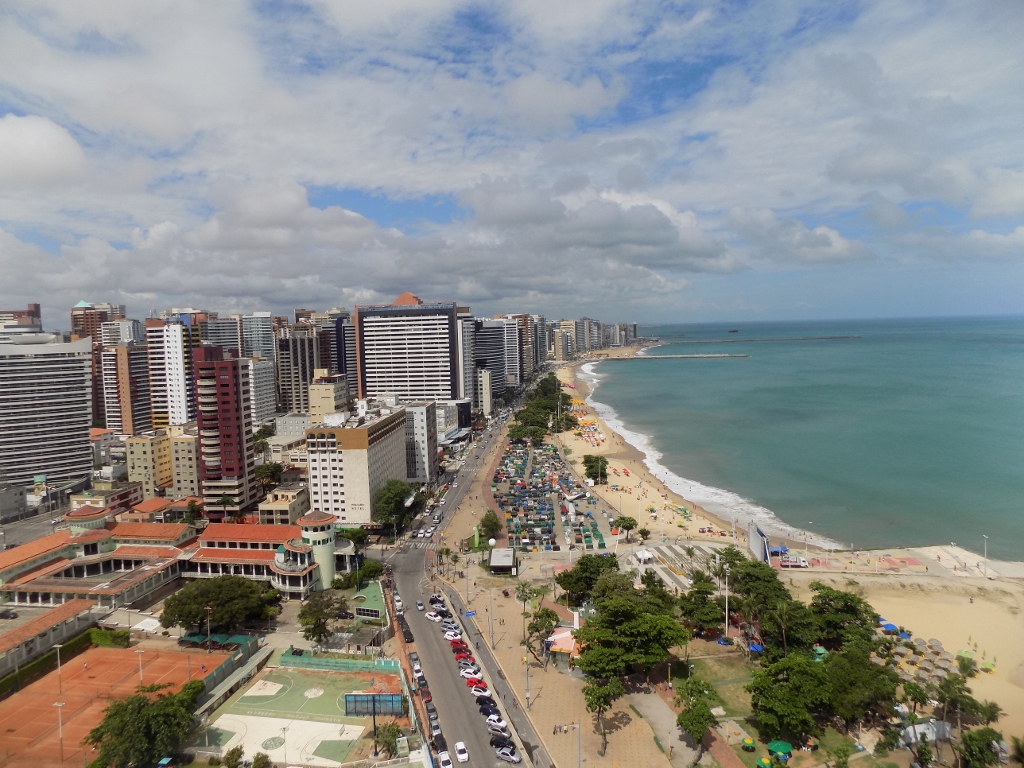 Fortaleza, view from the top of the hotel
Fortaleza, view from the top of the hotel
This visit to Brazil took almost one month and yet, despite the intensive moving around, we managed to visit only less than half of the country. This is so because Brazil is huge, it’s the fifth largest country in the world (8.5 million square kilometres). Admittedly, a large portion of the country are “only” rainforests, but we did not even got to this part during this visit. I’m not too worried about it though, since I already have some ideas for the next visit to the country and about the routes I would take then.
On the other hand, regardless of its long coast, during this journey I did not see any beach that I would like to go back to in order to spend some kind of summer vacations there. There is the Sun, there is warm water in the ocean, but there are also large waves, strong currents and all sorts of sea beasts. As far as I know, Brazil is not the destination which tourists frequent in order to spend their summer vacations there. Unfortunately, many of them come here for completely different reasons. Thus, both in Rio and in Fortaleza, which are the main incoming and outgoing points for foreign visitors, we saw posters around the cities which had the word “syphilis” written in big letters along with additional information saying that this is a treatable disease and that it is necessary to visit a doctor. If there is this level of concern about the public health and this particular topic, then it is clear what the real situation is like.
We went back to our homes via Paris and there we had several hours in-between the flights, which we used very nicely, plus we were very lucky that this was a dry and quite a sunny day, although it was rather cold. After all, it was January and this was in Europe, while the heat and the air humidity of Brazil were by this time far behind us.